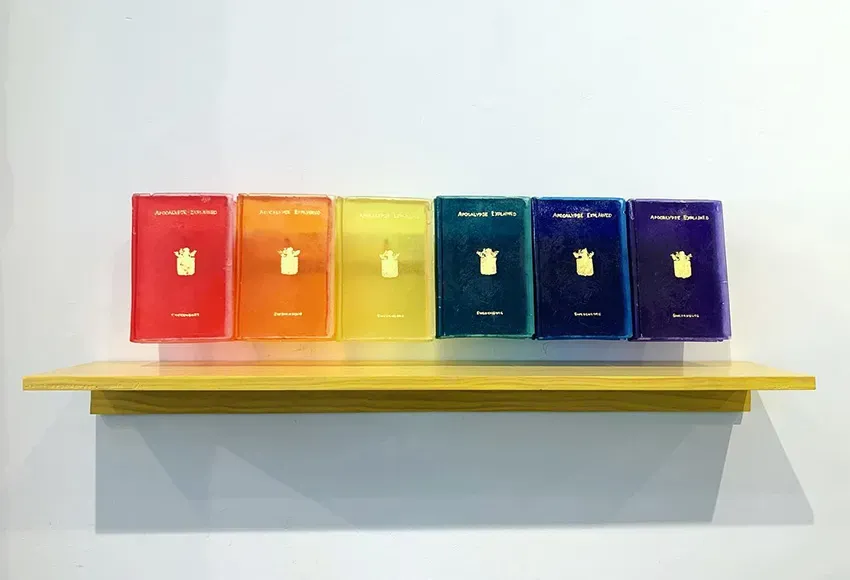The Center on Contemporary Art, also known as CoCA, worked with Gothic Pride Seattle (GPS) on A Dreadful Beauty: History and Art from Gothic Pride Seattle. This exhibition not only showcased many talented members of Seattle's goth community over time but also raised money to fund GPS's Pride float for the 2024 parade.
The exhibition opened on Thursday, May 2, at the TK Building in Pioneer Square. All artists featured are local to the Seattle area and many are members of the LGBTQ+ community. No participating artists received payment to feature their artwork; instead, donations made at the exhibit, and all additional profits are going toward Gothic Pride Seattle's giant bat float, a hit during the annual Pride Parade in June.
Each piece included in the exhibit was chosen by event curators to reflect on the modern post-pandemic goth movement. "Our curators are interested in how the movement's visual iconography (neo-punk, hardcore, metal, popular culture, eroticism, body horror, etc.) has changed in the wake of the pandemic and the recent attack on Trans rights by conservative politicians," said David Francis, PhD, curatorial director of CoCA.
The event – like nothing CoCA has ever seen – included the infamous goth superstar DJ JQ Quesada, straight out of Mercury Goth Dance Club in Capitol Hill.
Long history
Since its founding in 2001, Gothic Pride Seattle has evolved to become a multifaceted organization. Originally founded by Lancer Forney to celebrate LGBTQ+ members of the goth community, the organization officially became a nonprofit in 2015. Today, Gothic Pride Seattle organizes community events, including consent workshops, the Little Black Flea Market, and of course the annual Goth Pageant. It also provides resources for LGBTQ+ youth through virtual and in-person workshops.
The goth subculture began in the UK in the 1980s as an offshoot of the post-punk era. While originally deriving from the music scene, it is seen as a lifestyle today and encompasses fashion, artwork, and pop culture. The American goth movement, which began in cities like Seattle shortly after its UK origins, draws inspiration from popular cinema, including Beetlejuice, The Hunger, and Tim Burton films like The Corpse Bride.
From the beginning, the goth community held similarities with the LGBTQ+ community. In the early '80s, it declared a rejection of "traditional standards of sexual property" and embraced "deviant sexual practices." Serving as a safe space for LGBTQ+ youth, the goth community became increasingly popular toward the turn of the century.
Unfortunately, it also stirred a moral panic among conservatives and religious organizations for "embracing the darkness" and pushing progressive political ideas.
Today, the goth community remains a safe space for LGBTQ+ children and adults. No stranger to the moral panic that being visibly different can cause, Goth Pride Seattle hopes this latest event will make a statement about how valuable LGBTQ+ people are to the goth community.
A Dreadful Beauty was more than just an art show – it was a celebration of the resilience of Seattle's LGBTQ+ goth community, how far they've come, and a reminder that there's beauty in the darkness.


